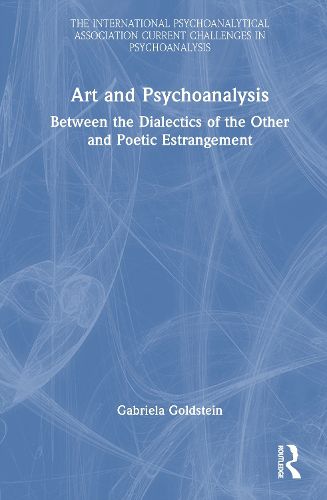Readings Newsletter
Become a Readings Member to make your shopping experience even easier.
Sign in or sign up for free!
You’re not far away from qualifying for FREE standard shipping within Australia
You’ve qualified for FREE standard shipping within Australia
The cart is loading…






This book explores the concept of estrangement from a psychoanalytic perspective, intertwining art and aesthetics to offer a paradigm of the aesthetic experience.
Gabriela Goldstein suggests that an unexpected encounter with a work of art may lead to a state of poetic estrangement, promoting a possible reorganization of its subject's psychic economy. The conceptual work is illuminated with vignettes exploring the experience of this state of estrangement, reflecting on the encounter between the subject and the other/Other, between analyst and patient and in the framework provided by the analytical situation. Finally, Goldstein considers how the metapsychology of aesthetic experience and its research contribute to clinical understanding of processes of deficient symbolization.
Art and Psychoanalysis will be key reading for psychoanalysts, artists, researchers, and teachers of art and psychoanalysis. It will also be of great interest to art therapists, students of art and the humanities, as well as other readers interested in an in-depth understanding of the aesthetic experience and creative processes.
$9.00 standard shipping within Australia
FREE standard shipping within Australia for orders over $100.00
Express & International shipping calculated at checkout
Stock availability can be subject to change without notice. We recommend calling the shop or contacting our online team to check availability of low stock items. Please see our Shopping Online page for more details.
This book explores the concept of estrangement from a psychoanalytic perspective, intertwining art and aesthetics to offer a paradigm of the aesthetic experience.
Gabriela Goldstein suggests that an unexpected encounter with a work of art may lead to a state of poetic estrangement, promoting a possible reorganization of its subject's psychic economy. The conceptual work is illuminated with vignettes exploring the experience of this state of estrangement, reflecting on the encounter between the subject and the other/Other, between analyst and patient and in the framework provided by the analytical situation. Finally, Goldstein considers how the metapsychology of aesthetic experience and its research contribute to clinical understanding of processes of deficient symbolization.
Art and Psychoanalysis will be key reading for psychoanalysts, artists, researchers, and teachers of art and psychoanalysis. It will also be of great interest to art therapists, students of art and the humanities, as well as other readers interested in an in-depth understanding of the aesthetic experience and creative processes.